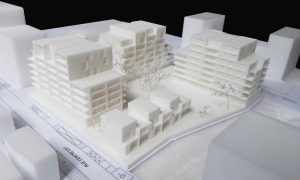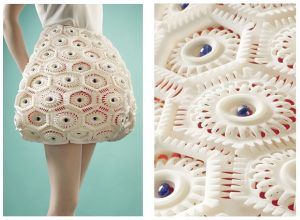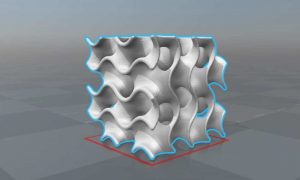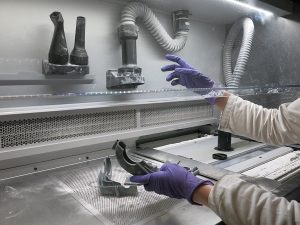The advantages of 3D printing are numerous, and more importantly, they are different for each sector or application! While implementing this technology in your business, you’ll have to correctly identify your opportunities, to make the most of additive manufacturing and all its advantages for you. Let’s see what are the main benefits of 3D printing.
- Get faster product development and prototyping
Additive manufacturing is known to be an efficient prototyping technique, but do you know why? 3D printing is faster than traditional manufacturing techniques to create a proof of concept or a prototype.
Indeed, it is possible to make iterations quickly thanks to this process: You print a version, and it is then possible to modify your 3D file directly on your 3D modeling software and then print a new iteration to see if the result meets your requirement. If not, making a new version will not take you more time. Additive manufacturing allows rapid prototyping!
Moreover, this whole process will be cheaper using additive manufacturing. For example, using raw Multi Jet Fusion PA12 will be the cheapest option you will find on Sculpteo’s website.
- Working on better designs and products
3D printing allows for creating products with better design, meaning products can be totally optimized thanks to 3D printing. But how is it even possible? Additive manufacturing can be used to improve existing objects. Using this layer-by-layer technique is a way to manufacture objects in one part, and for some projects, a way to avoid the assembly process. Thanks to that: structures impossible to create with traditional manufacturing techniques can be easily achieved by using this 3D technique.
What are the possible improvements that can be made on a product thanks to additive manufacturing? For example, 3D printing is offering the possibility to get a lighter product by hollowing it. But it is also possible to get it stronger, or stronger and lighter at the same time by working on different structures, such as lattice structures. This specific design feature forms a network of crosshatch sections that strengthen the whole structure. Lattice structures are more than an ornamental feature since they give your final object a reinforced and optimized structure.
- Using 3D printing as a production process
Additive manufacturing is more and more used for production, and not only for prototyping. The quality of the parts coming out of 3D printers are now similar to parts created with injection molding! By using resin 3D printing, for example, you will be able to reach a high level of detail, technologies such as DLS, or Multi Jet Fusion technology for plastic parts.
- Mass-customization made easier
Mass customization is a great advantage of additive manufacturing. Creating custom-made products is easier, faster and cheaper. Moreover, mass-customization can be an asset in various fields, such as the medical sector, as we will focus on a little bit later.
3D printing offers the possibility to get different versions of the same product and get parts more adapted for each person each time: it can be an asset for fashion, glasses, medical, etc.
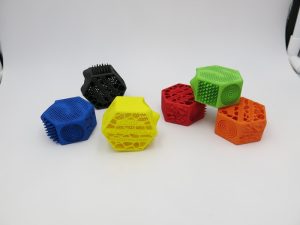
- Make the most of a great competitive advantage
Implementing 3D printing in your business can represent a significant competitive advantage. If your competitors are not using additive manufacturing yet, you could really start to improve your business strategy and make the most of the advantages they are not able to reach yet.
Each year, in our State of 3D Printing, more than 90% of the respondents to our survey consider that 3D printing is a competitive advantage for them. And what about you?
- Improve your tooling process
If we often think about additive manufacturing to create prototypes of end products, this technology can actually help you improve your tooling process. 3D printed tools are actually becoming more and more popular for car manufacturers!
This is a great way to get totally adapted tools, implementing additive manufacturing inside your tooling process is allowing you to save time and money.
- Rethink your supply chain
Your storage and supply chain can be totally changed and improved thanks to additive manufacturing. Using additive manufacturing, you will have the opportunity to manufacture your parts exactly when you need them, meaning you don’t have to deal with a warehouse and inventory. You can rethink this process and get a digital inventory by creating parts on-demand.
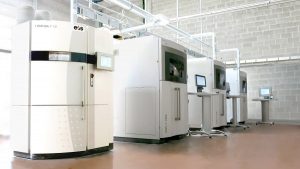
- 3D printing is not that expensive
You might wonder, how much does it cost to 3D print? This manufacturing technique is more and more democratized, this is why it is now quite affordable to 3D print for your prototyping or production process.
It will depend on the technology you need to use for your project. A desktop 3D printer can be affordable. But if you need to produce parts using SLS technology, for example then it might be expensive, especially if you are a small business. But this doesn’t mean that you can’t use an industrial 3D printer! You can start to make the most of a 3D printing service such as Sculpteo to order your parts, using all professional 3D printing technologies you want, without buying 3D printers.
If you want to know how much your 3D printing project will cost, you can get an instant quote on our website by uploading your 3D file. The price of your part will depend on different factors such as the choice of technology, material, the volume of your part, the amount of material needed, etc.


 Connect with Google
Connect with Google Connect with Facebook
Connect with Facebook

